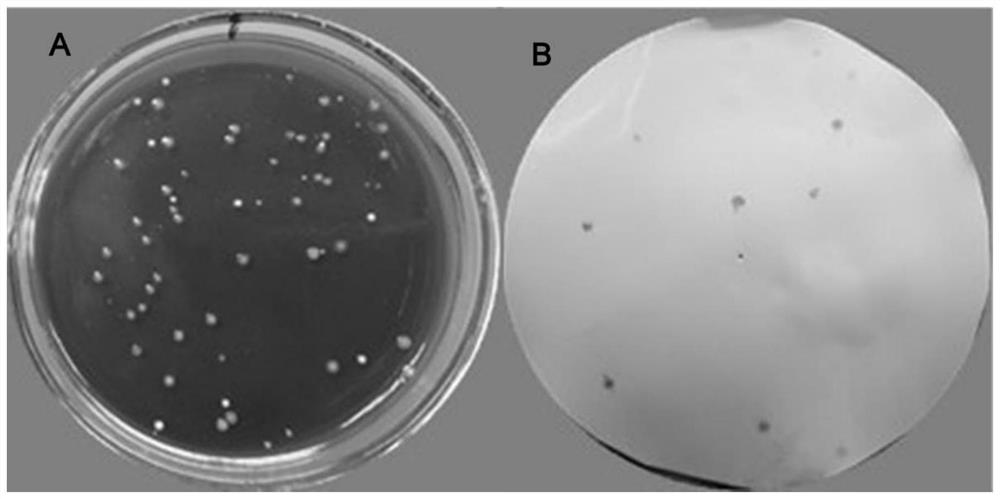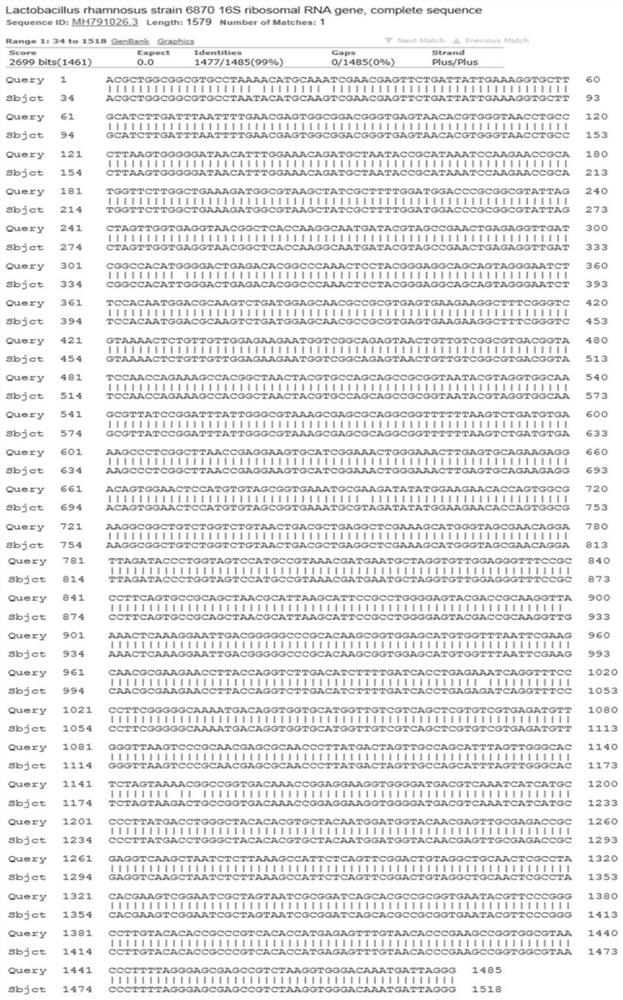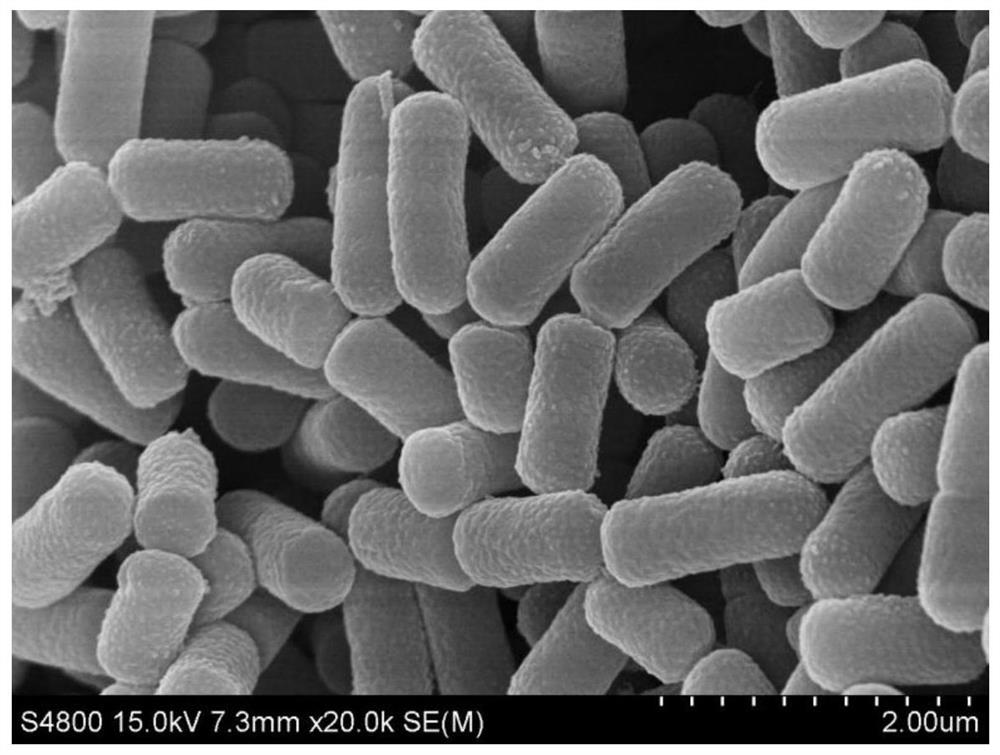A ciliated Lactobacillus rhamnosus with mast cell activity regulation and its use
A mast cell, rhamnose technology, applied in the field of microorganisms
- Summary
- Abstract
- Description
- Claims
- Application Information
AI Technical Summary
Problems solved by technology
Method used
Image
Examples
Embodiment 1
[0043] Example 1 strain enrichment and cultivation
[0044] Traditional fermented dairy products are made by herdsmen in Tibet, Xinjiang and Inner Mongolia. Weigh 25g of the sample and add 225 mL of normal saline, homogenate, and dilute 10 times with normal saline; take 5 mL of the appropriate dilution factor and add 1 mg of SpaA antibody Coupled magnetic beads were incubated at 37°C for 75 min, placed on a magnetic separation rack, magnetically separated for 2 min, and the supernatant was discarded; washed twice with 500 μL PBS, resuspended by adding 200 μL PBS, and the obtained magnetic bead suspension Directly coat the MRS agar plate, incubate anaerobically at 37°C for 24 hours, and select a plate with evenly distributed colonies for use.
[0045] The test results showed that among the 17 traditional fermented dairy products, only one sample collected from the Tibetan pastoral area was enriched by immunomagnetic beads and coated with MRS solid medium. After 24 hours of cult...
Embodiment 2
[0046] Example 2 Colony isolation of ciliated phenotype Lactobacillus rhamnosus
[0047] The ciliary phenotype Lactobacillus rhamnosus was isolated by colony immunoblotting, and the steps were as follows: select a plate with uniform colony distribution, cut out a nitrocellulose membrane with the same diameter as the petri dish, soak in deionized water for 10 min, and dry at 37°C 10 min. Place the NC membrane on the surface of the medium, let it stand at room temperature for 5 minutes, remove the NC membrane, and dry it at 37°C for 30 minutes; place the transfer membrane in 5% skim milk, and block it at room temperature for 1 hour; wash with PBST buffer 3 times , incubated in anti-SpaA antibody diluent for 1 h; washed 3 times in PBST, incubated in HRP-labeled goat anti-mouse IgG liquid for 1 h; washed 3 times in PBST, and immersed the transfer membrane in freshly prepared DAB chromogenic solution , and develop color in the dark for 10 min. When obvious spots appear on the memb...
Embodiment 3
[0049] Example 3 Physiological and biochemical identification of positive bacterial strains
[0050] Physiological and biochemical identification of the positive strains, the steps are as follows: inoculate the obtained positive colonies into the MRS medium by streaking, 37°C, anaerobic culture for 24 hours, pick a single colony smear on the plate, fix it, and add crystal violet staining solution dropwise , stain for 1 min, and wash with water; add iodine solution dropwise, act for 1 min, and wash with water; add 95% ethanol dropwise for decolorization for 15-20 s, and wash with water; counterstain with safranin for 1 min, and wash with water; microscopically examine and record the cell morphology of the strain. At the same time, single colonies were picked for catalase test, indole, hydrogen sulfide and ammonia, nitrate reduction, arginine hydrolysis, and sugar fermentation tests.
[0051] The results showed that the strains from which the positive colonies originated were Gr...
PUM
| Property | Measurement | Unit |
|---|---|---|
| diameter | aaaaa | aaaaa |
| length | aaaaa | aaaaa |
Abstract
Description
Claims
Application Information
 Login to View More
Login to View More - R&D
- Intellectual Property
- Life Sciences
- Materials
- Tech Scout
- Unparalleled Data Quality
- Higher Quality Content
- 60% Fewer Hallucinations
Browse by: Latest US Patents, China's latest patents, Technical Efficacy Thesaurus, Application Domain, Technology Topic, Popular Technical Reports.
© 2025 PatSnap. All rights reserved.Legal|Privacy policy|Modern Slavery Act Transparency Statement|Sitemap|About US| Contact US: help@patsnap.com



